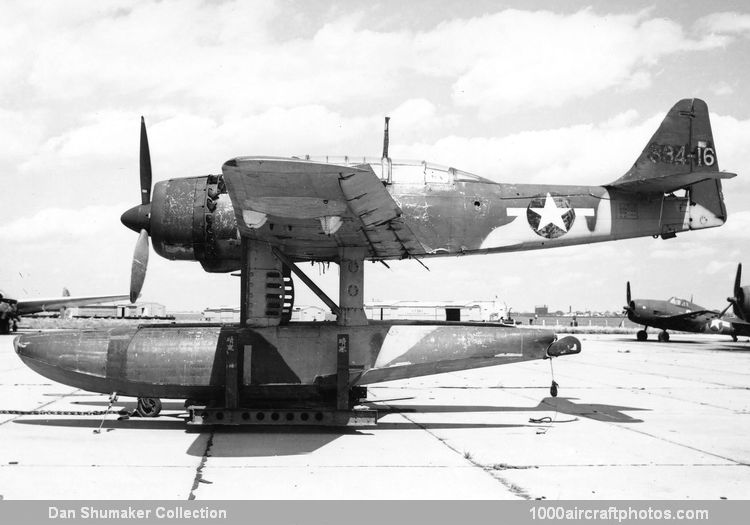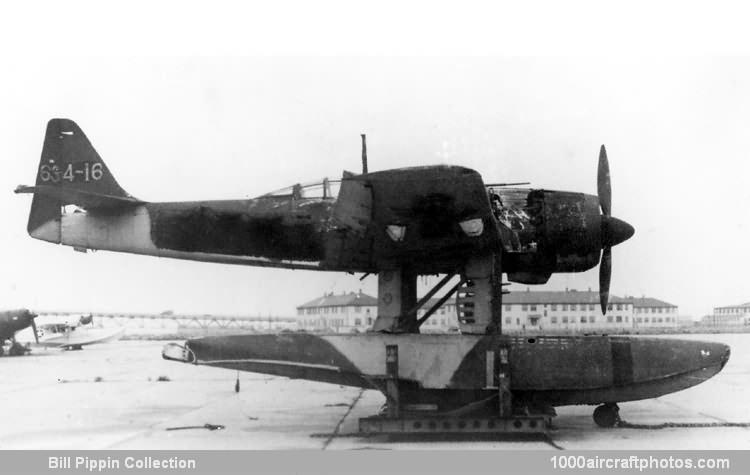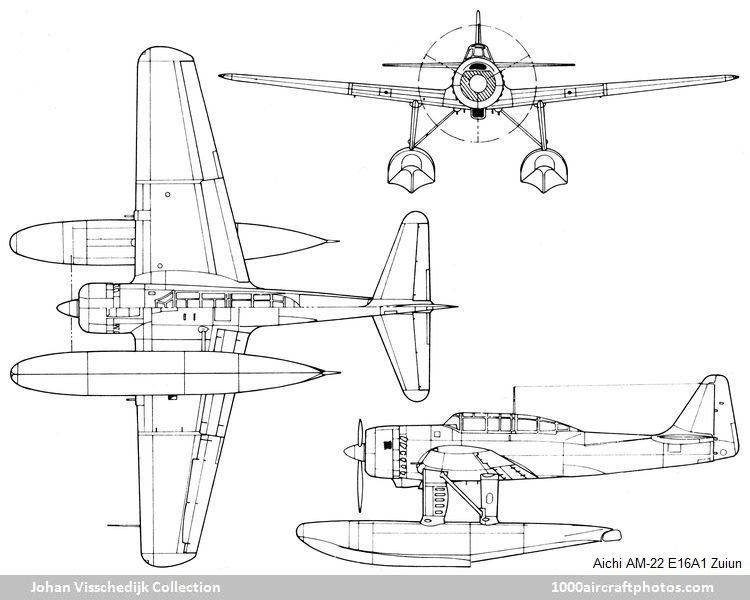11/30/2011. Remarks by Johan Visschedijk: "As few airfields were available on the islands dispersed over the vast area of the Pacific Ocean it was logical for the Japanese Navy to rely heavily on the use of float seaplanes, and more types of reconnaissance float seaplanes were designed for that Service than any other class of aircraft. In 1939 the Aichi E13A1, intended to replace the ageing Kawanishi E7K2 aboard the Navy's seaplane tenders and cruisers, had not yet been accepted for production when Naval Headquarters began drafting a 14-Shi (1939) specification calling for a successor to the E13A.
Disagreements regarding the requirements to be met by the new reconnaissance float seaplane prevented the manufacturers from submitting specific designs. However, in October 1940, Engineers Kishiro Matsuo and Yasushiro Ozawa at Aichi Kokuki K.K. in Eitoku began designing the Aichi AM-22 and in January 1941 the Navy drafted a new 16-Shi (1941) specification around the design of the AM-22. Requirements were once again modified in July 1941 but after that date the Aichi design was finalized.
The first Aichi AM-22, officially designated Navy Experimental 16-Shi Reconnaissance Seaplane (E16A1), was completed in May 1942. Except for wooden wing tips and tail plane and fabric covered control surfaces, the aircraft was of all-metal construction and was powered by an 1,300 hp Mitsubishi MK8A Kinsei 51 radial and armed with two wing-mounted 0.303 in (7.7 mm) machine guns and one flexible rear-firing 0.303 in (7.7 mm) machine gun. The twin single-step metal floats were attached to the wings by vertical N-struts and to the fuselage by inclined I-struts.
The wings folded upward for stowage aboard cruisers or seaplane tenders. Designed to operate as a dive-bomber, the E16A1 was fitted with hydraulically-operated dive brakes mounted on the front leg of the N-struts. Two additional prototypes with wing span increased from 41 ft 8 in (12.70 m) to 42 ft 0.3 in (12.81 m) were built and were used to test various dive-brake designs as the original set caused excessive buffeting when extended. Like the production aircraft these prototypes were armed with two wing-mounted 0.787 in (20 mm) cannon and one flexible 0.511 in (13 mm) machine gun and could carry one 250 kg (5511b) bomb under the fuselage.
With perforated dive brakes, redesigned rear canopy section, strengthened floats and improved flap actuation mechanism the E16A1 was accepted for production in August 1943 as the Navy Reconnaissance Seaplane Zuiun (Auspicious Cloud) Model 11. Early production aircraft were powered by the Mitsubishi MK8A Kinsei 51 radial, but this engine was replaced by the MK8D Kinsei 54 on late production aircraft, most of these being built by Nippon Hikoki K.K. The E16A2, powered by a 1,560 hp Mitsubishi MK8P Kinsei 62, was still undergoing tests at the time of the Japanese surrender.
Entering service at a time when Japan had lost air superiority, the E16A1s (code name "Paul") suffered heavy losses during the Philippines campaign of 1944 and most surviving Zuiuns were expended in suicide attacks in the Okinawa area. A total of 256 E16As were built, of which Aichi produced the 3 E16A1 prototypes, 193 production E16A1s and 1 E16A2 prototype, the balance of 59 E16A1s was built by Nippon Hikoki K.K. at Tomioka.



